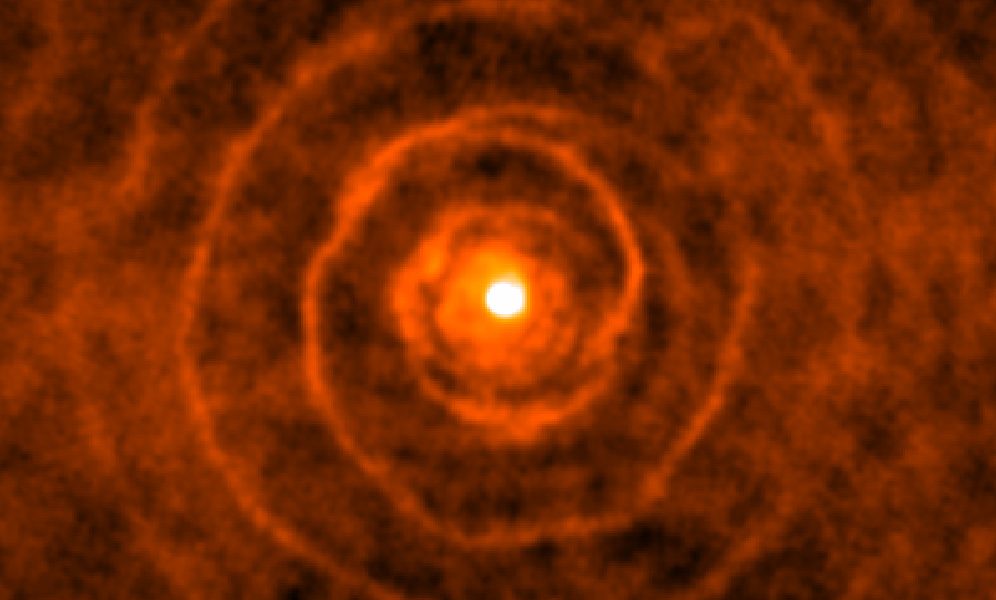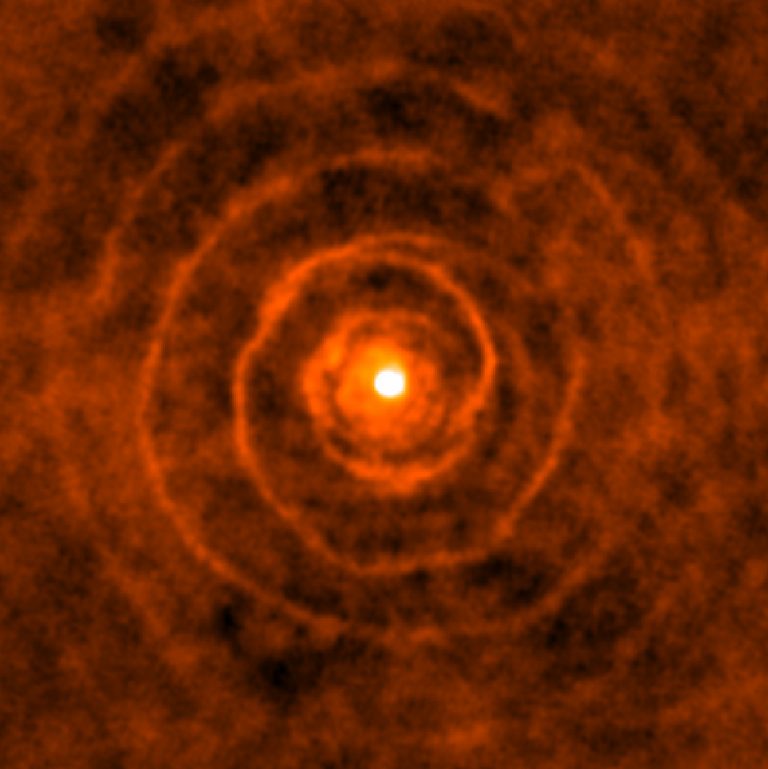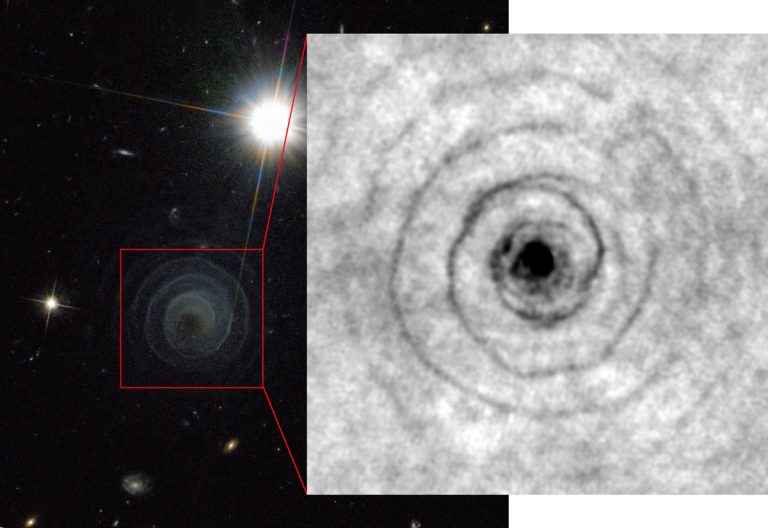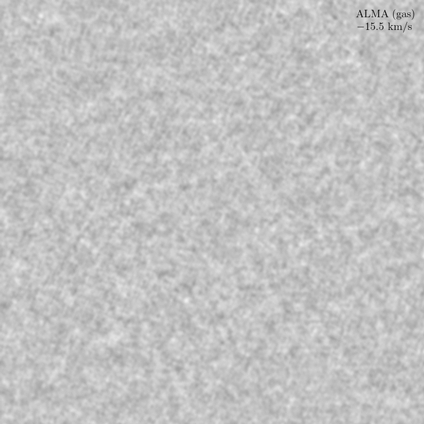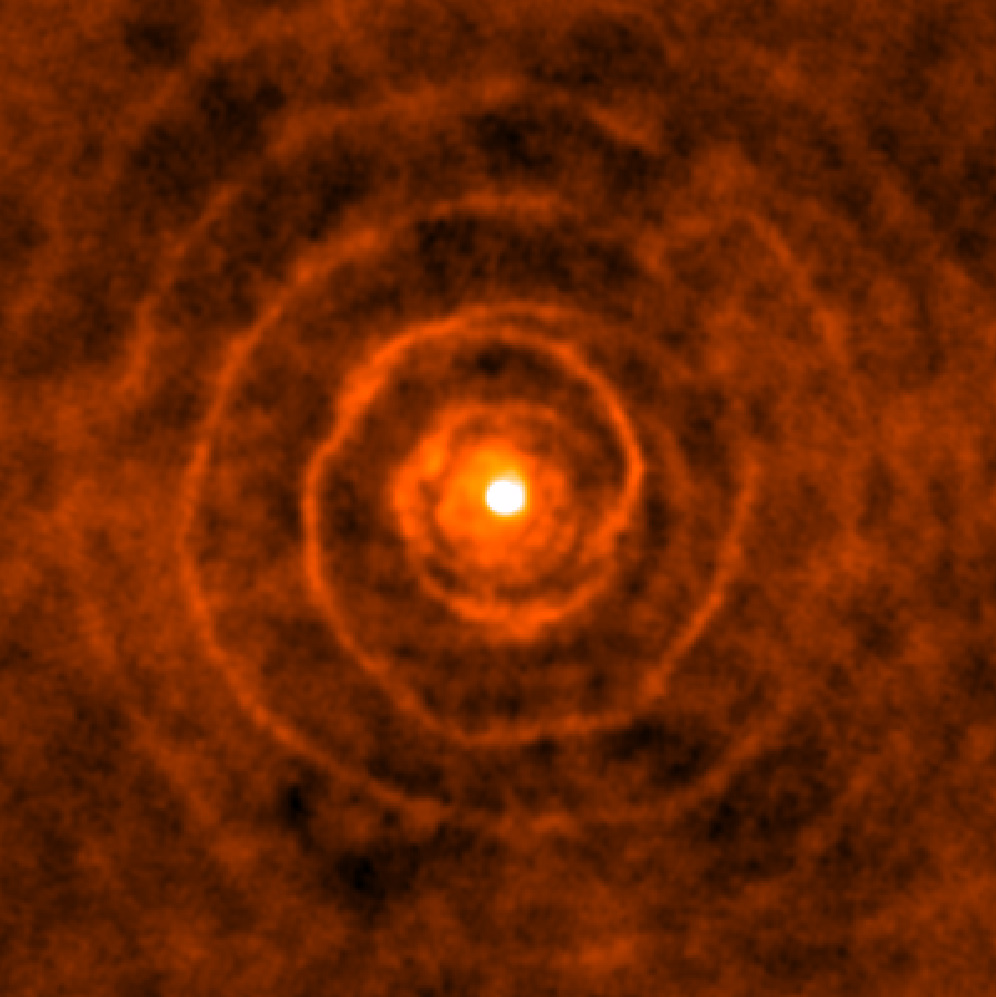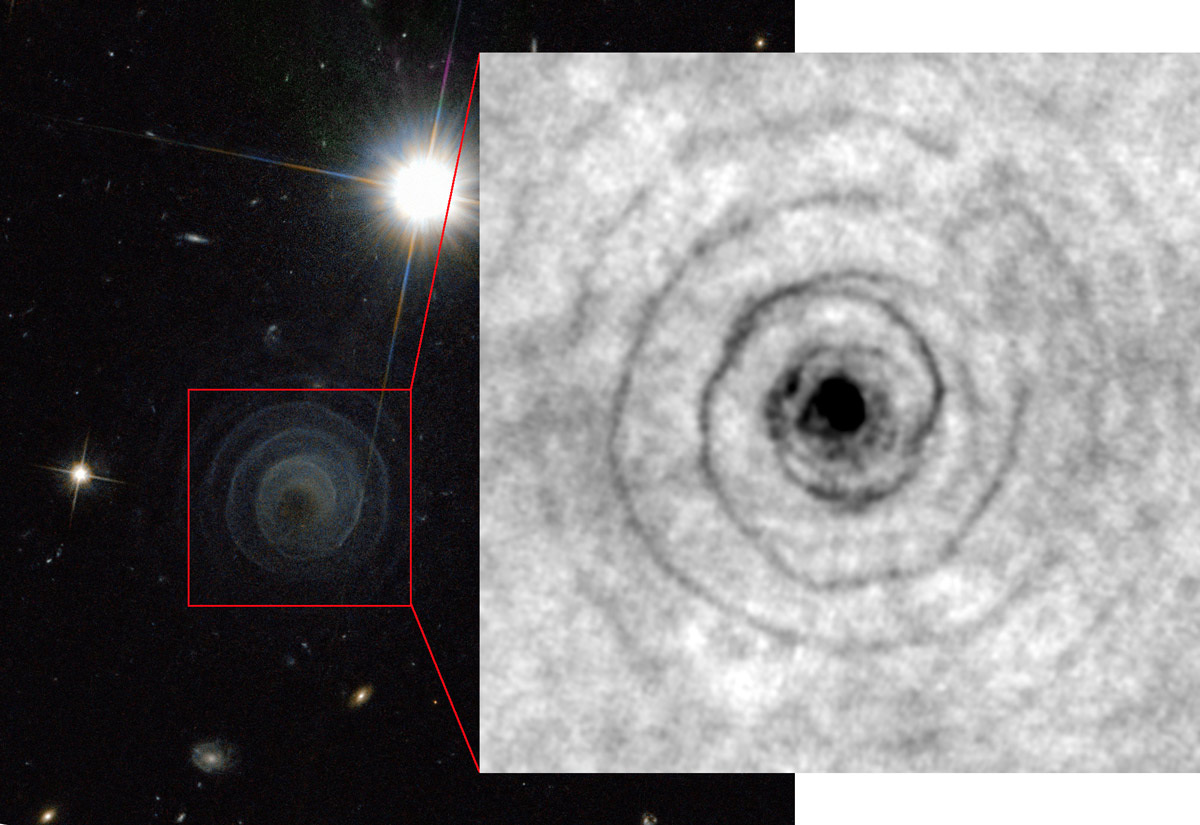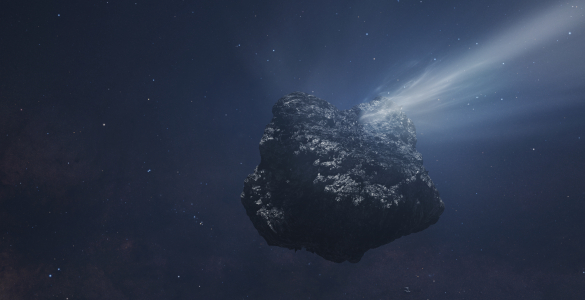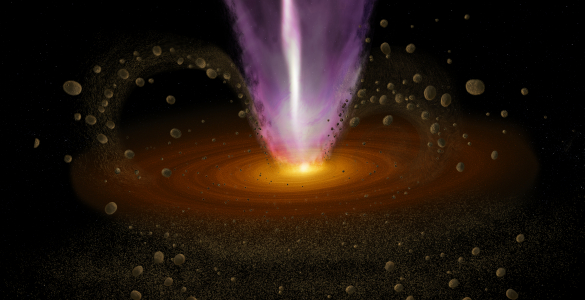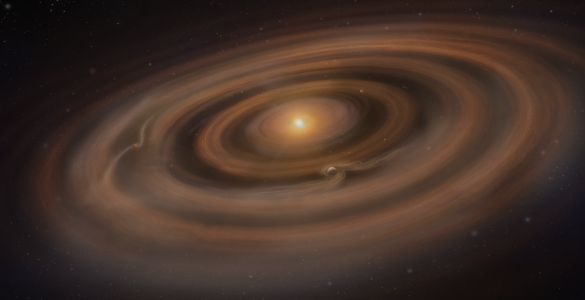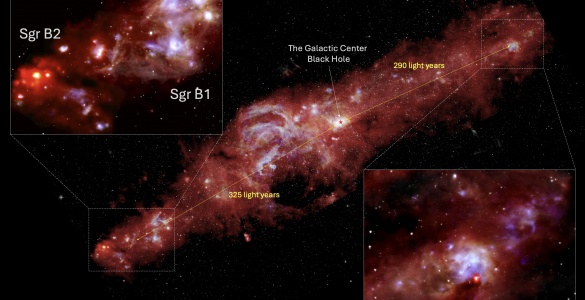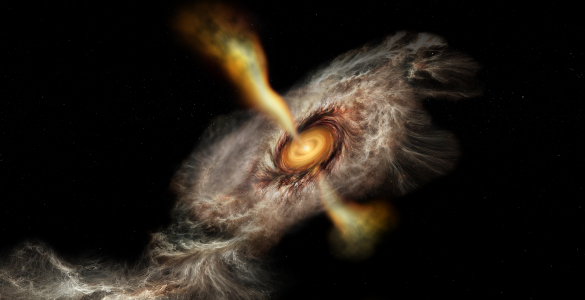An international team of astronomers, led by Hyosun Kim in Academia Sinica Institute of Astronomy and Astrophysics (ASIAA, Taiwan), has found a way of deriving the orbital shape of binary stars that have orbital periods too long to be directly measured. This was possible thanks to an observation toward the old star LL Pegasi (also known as AFGL 3068) using the Atacama Large Millimeter/submillimeter Array (ALMA). This work appears in the journal Nature Astronomy.
“It’s really exciting to see such a beautiful spiral-shell pattern in the sky. Our observations of LL Pegasi binary system have revealed the delicately ordered three-dimensional geometry of this spiral-shell pattern, and we have produced a very satisfying theory to account for its details,” says Hyosun Kim.
The new ALMA images reveal the detailed features of spiral-shell pattern imprinted in the gas material continuously ejected from LL Pegasi. A comparison of this observation with computer simulations led the team, for the first time, to the conclusion that a highly elliptical orbit is responsible for the morphology of gas distribution surrounding this binary system. In particular, the bifurcation of the spiral-shell pattern that is clearly visible in the ALMA images is a unique characteristic of elliptical binaries. This quintessential object opens a new window on the nature of central binaries through the recurrent patterns that reside far from the star at distances of a few thousand times the size of the star LL Pegasi.
The full news release with images and animations is here.
Notes
This research is presented in a paper titled “The Large-Scale Nebular Pattern of a Superwind Binary in an Eccentric Orbit” by Kim et al. published in the journal Nature Astronomy.
The team is composed of Hyosun Kim (ASIAA, Taiwan; East Asian Core Observatories Association Fellow), Alfonso Trejo (ASIAA, Taiwan), Sheng-Yuan Liu (ASIAA, Taiwan), Raghvendra Sahai (Jet Propulsion Laboratory, USA), Ronald E. Taam (ASIAA, Taiwan; Northwestern University, USA), Mark R. Morris (University of California, Los Angeles, USA), Naomi Hirano (ASIAA, Taiwan), and I-Ta Hsieh (ASIAA, Taiwan).
The Atacama Large Millimeter/submillimeter Array (ALMA), an international astronomy facility, is a partnership of ESO, the U.S. National Science Foundation (NSF) and the National Institutes of Natural Sciences (NINS) of Japan in cooperation with the Republic of Chile. ALMA is funded by ESO on behalf of its Member States, by NSF in cooperation with the National Research Council of Canada (NRC) and the National Science Council of Taiwan (NSC) and by NINS in cooperation with the Academia Sinica (AS) in Taiwan and the Korea Astronomy and Space Science Institute (KASI).
ALMA construction and operations are led by ESO on behalf of its Member States; by the National Radio Astronomy Observatory (NRAO), managed by Associated Universities, Inc. (AUI), on behalf of North America; and by the National Astronomical Observatory of Japan (NAOJ) on behalf of East Asia. The Joint ALMA Observatory (JAO) provides the unified leadership and management of the construction, commissioning and operation of ALMA.






